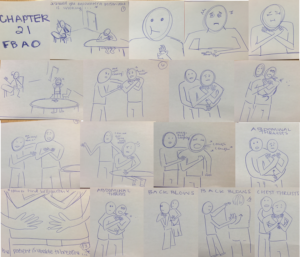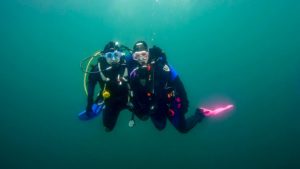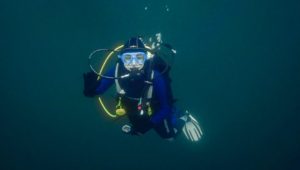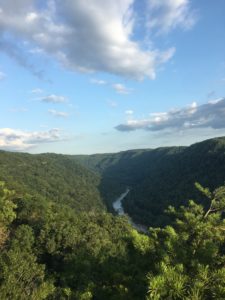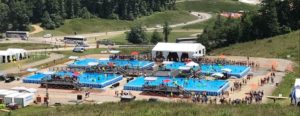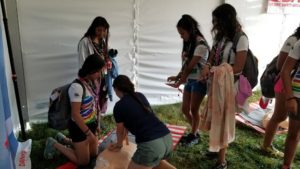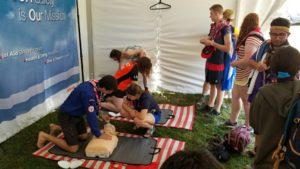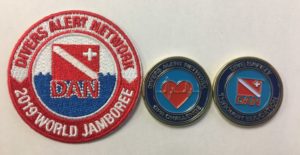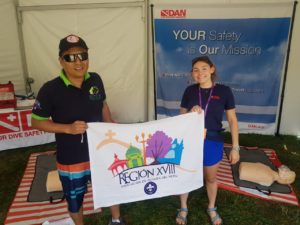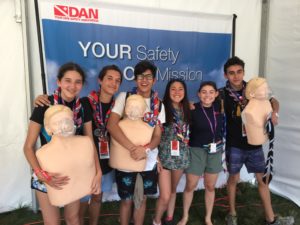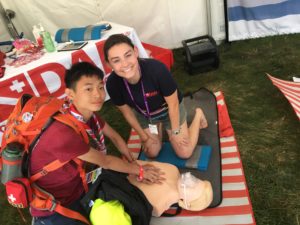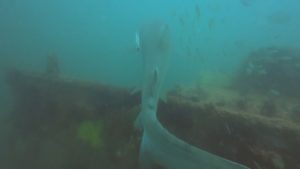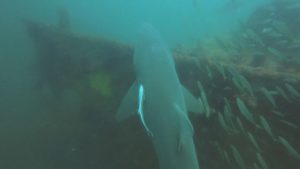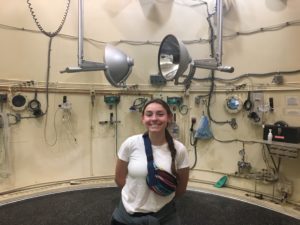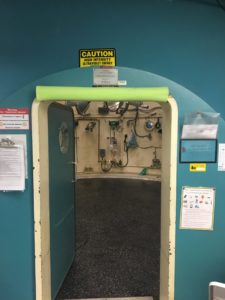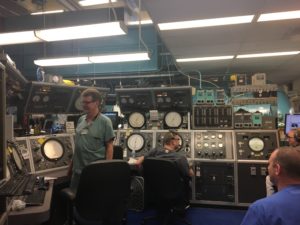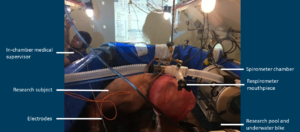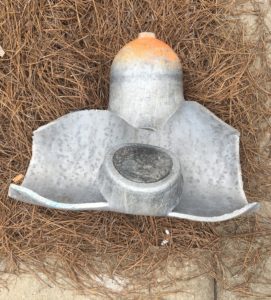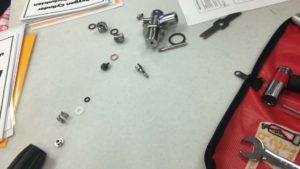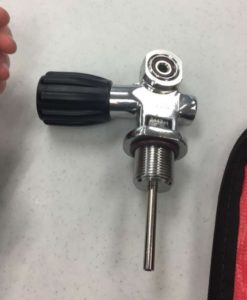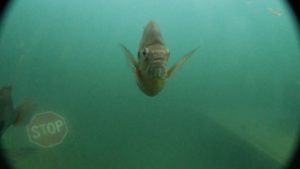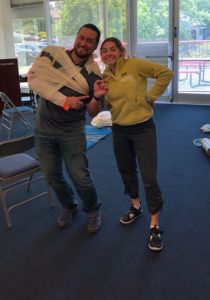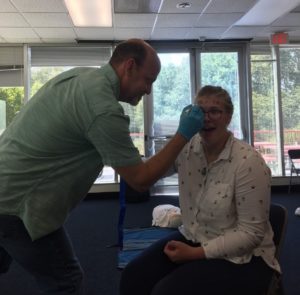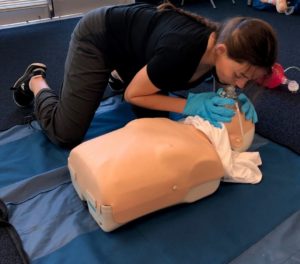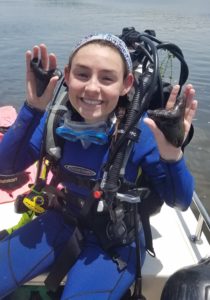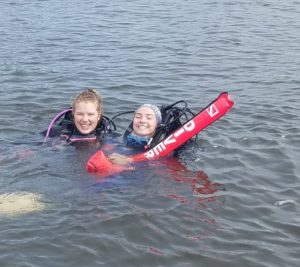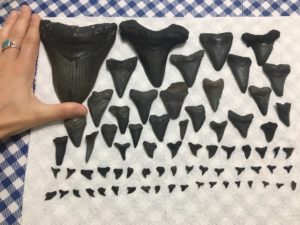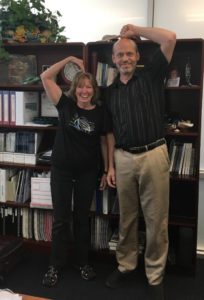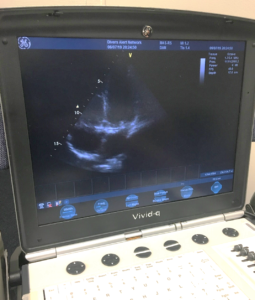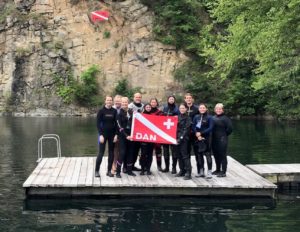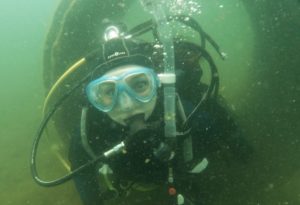At the Our World-Underwater Scholarship Society’s 45th annual meeting, held in New York City in May, four of the five incoming OWUSS interns for Summer 2019 discovered a common connection: a tie to diving and passion for science that could be traced back to work with Dr. Franziska Elmer.
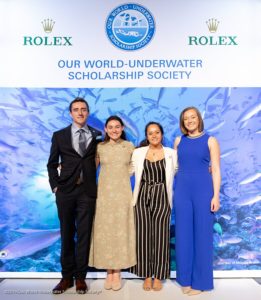
2019 OWUSS Interns (Left to right) Ben Farmer, Abbey Dias, Kyra Jean Cipolla, and Liza Hasan at the 2019 OWUSS annual event.
“Fran” is a professor and research mentor who is known by students for her work at CIEE Bonaire and School for Field Studies Turks and Caicos (SFS TCI). Fran is from Switzerland and has her Ph.D. in Marine Biology from Victoria University of New Wellington (New Zealand). Her focus is on coral recruitment and calcium carbonate budgets, as well as on the macroalgae Sargassum sp. She is currently a professor of Marine Ecology at SFS TCI and uses 3D modeling to study coral reefs and hurricane damage. She is also working with other SFS TCI faculty in collaboration with the world-renowned biochemical algae lab at Greenwich University in London to find possible products that can be made from sargassum such as fertilizer and biofuel. The floating sargassum rafts accumulate near the TCI and wash up on the beaches, which can cause harm to existing seagrass ecosystems. The ultimate goal is to use the sargassum for biofuel in the TCI and reduce the importation of fossil fuels to the islands.
Fran also has an interest in the infection of reef fish by the dermal parasite Scaphalocephanus expansus and is monitoring the parasites present in the TCI.
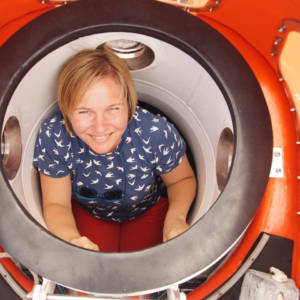
Franziska “Fran” Elmer, Ph.D.
Abbey Dias (DAN/OWUSS Dive Safety Education Intern) and Kyra Jean Cipolla (Dr. Lee H. Sommers AAUS Scientific Diving Intern) met during their semester abroad studying marine science in the Turks and Caicos at the School for Field Studies. There, they took Fran’s Marine Ecology class and were both part of her research team studying topographic complexity of corals and biodiversity using 3D photogrammetry.
“Fran is one of the most fun people to work with on land and underwater. She is innovative and pays close attention to detail. She taught me how to write my first full-length scientific paper, how to make ‘nice cream’ out of frozen bananas, and multiple different ways to make a meal out of sargassum! Her ingenuity and commitment to conservation are inspiring. She supported me when I wanted to design my own research project and provided me with the guidance and encouragement I needed for it to succeed.” – Abbey Dias
“Not only does she teach science well, she is a model at marine conservation and an advocate for sustainability. During the semester that I spent with Fran, I could tell she really wanted her students to do well, and she always communicated with us about opportunities, new research technologies and techniques, and gave us great advice on how to be effective scientists. She definitely helped me grow as a marine scientist, and I wouldn’t have succeeded as the AAUS Scientific Diving Intern without knowing and learning from Fran.”—Kyra Jean Cipolla
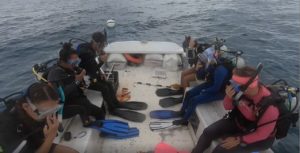
Fran (bottom right in pink) diving with students Abbey (in blue) and Kyra (blue fins) in South Caicos, Turks and Caicos, to conduct coral reef research during Fall 2019 at the School for Field Studies.
Liza Hasan (AAUS Mitchell Scientific Diving Research Intern) and Ben Farmer (Dr. Jamie L. King REEF Marine Conservation Intern) also knew each other previously through their study abroad program at CIEE Bonaire.
“[Fran’s] mentorship on my coral disease research project is what truly sparked my passion for marine research and fieldwork… She showed me how to be an intense researcher that gets a lot of things done, while also staying passionate about what you believe in, and having fun doing it. I could not have asked for a better mentor to direct me into the world of tropical marine science, and I am overjoyed to be rejoining her again in Turks & Caicos in the fall, this time as a Waterfront Assistant. She was one of the people that inspired me to stay involved with the education abroad world, and I am very excited to work alongside her soon!”—Ben Farmer
“Dr. Elmer inspired us all with her personal testament of what the pristine marine world looks like through her experiences on the Palmyra Atoll. I was inspired by Dr. Elmer to seek out interesting field positions and educational experiences far and wide after learning about the previous positions she has held. It was Dr. Elmer who suggested that my fellow CIEE students and I apply for internships through Our World-Underwater Scholarship Society. It is no coincidence that four of Dr. Elmer’s students across two different study abroad programs have received Our World-Underwater Scholarship Society internships. Not only is Dr. Elmer dedicated to research and conservation, but she is dedicated to her students.”—Liza Hasan
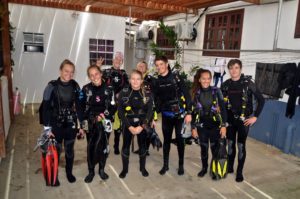
Fran (peeking out from the middle of the back) preparing to dive with students Liza (far left) and Ben (far right) in Bonaire.
Aside from scuba diving and marine science, Fran is passionate about art and environmental conservation. She is currently working to fund the purchase of a device that will turn plastic waste into useful items such as flower pots for the small island of South Caicos, where the SFS center is located.
This upcoming year, Fran will take a climate change sabbatical which will allow her to develop a number of projects. The first is to begin project management of offshore sargassum harvesting research for carbon sequestration and biofuel sources. Then, she will then bike 1,800 miles across seven countries while documenting environmental projects taking place along the Danube river, starting in Germany. Finally, Fran will organize the Caribbean section of the Global Coral Reef Week symposium, and increase accessibility to students and the general public.
Abbey, Kyra, Liza, and Ben would like to thank Fran for her hard work teaching students like us about the importance of marine ecosystems and ocean conservation. Fran’s influence on these interns has been incredibly important to their interest in pursuing careers in marine science and advocating for the protection of our ocean.
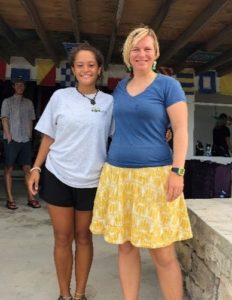
Kyra Jean and Fran on the last day in TCI.
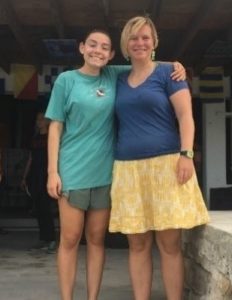
Abbey and Fran on the last day in TCI.
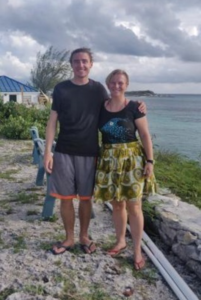
Ben and Fran working together in TCI.


